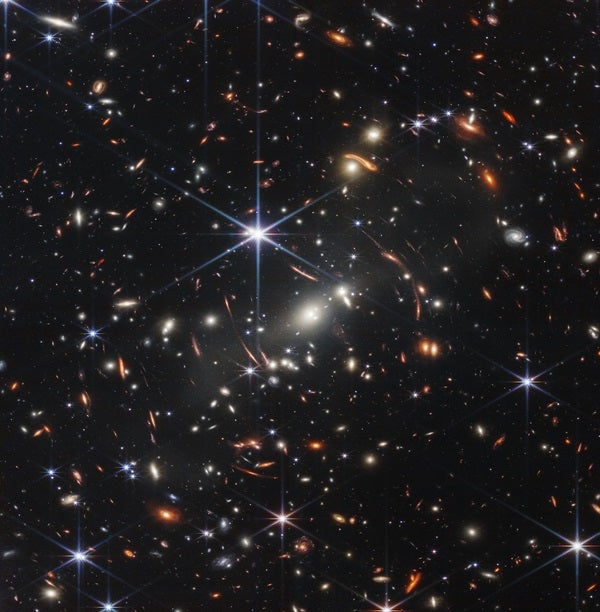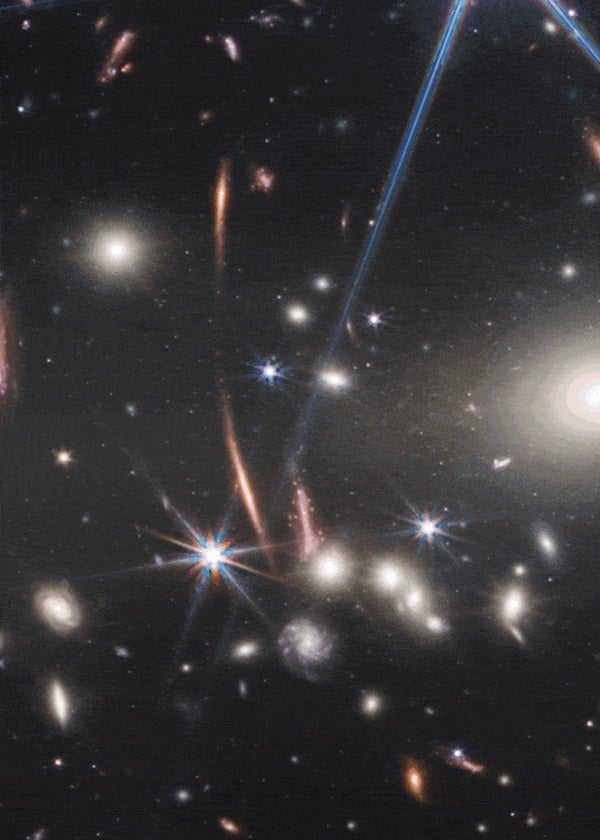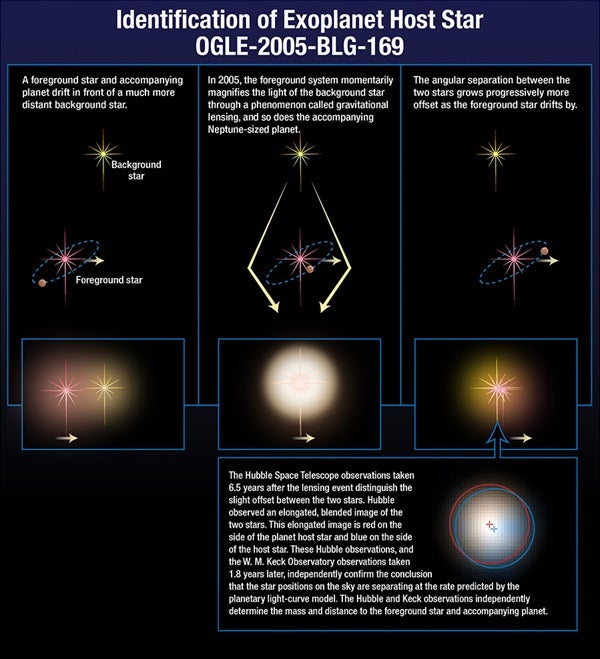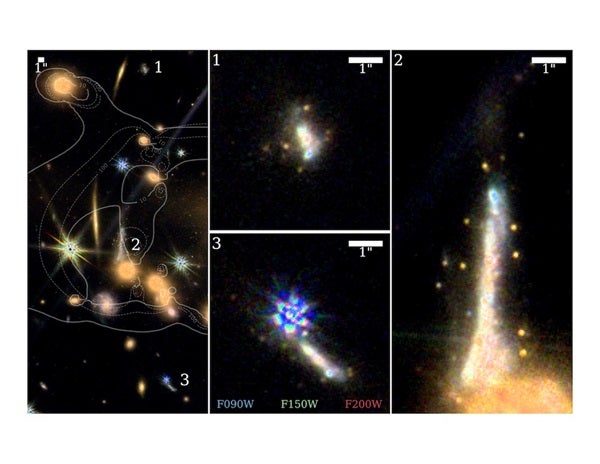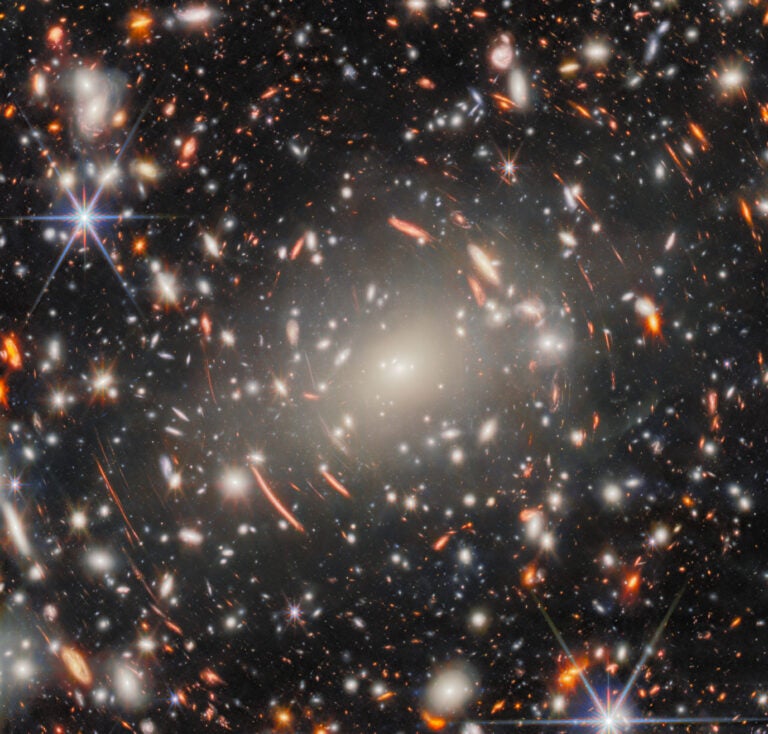As its first image, the James Webb Space Telescope (JWST) revealed the deepest infrared image of the universe to date. The image is teeming with thousands of galaxies, including some from when the cosmos was less than a billion years old.
These early galaxies can be spotted thanks to the immense mass of the galaxy cluster at the center, SMACS 0723, which acts like a magnifying glass — or more scientifically, a gravitational lens — allowing the light from these distant galaxies to reach us.
Among the galaxies made visible by SMACS 0723 is one researchers have dubbed the Sparkler galaxy, located some 9 billion light-years away.
“When we were looking at the first image of the Webb’s Deep Field,” said coauthor Kartheik G. Iyer, Dunlap Fellow at the Dunlap Institute for Astronomy & Astrophysics at the University of Toronto, to Astronomy, “some people in the team noticed that there was this galaxy that looks like it has a bunch of sort-of shiny dots around it. [One of us] started calling it the sparkly Sparkler and then name stuck.”
But what exactly are these so-called sparkles?
The team hypothesized that these compact objects could be either young, actively forming star clusters or much older globular clusters. If they were young star clusters, they would have been born some 3 billion years after the Big Bang, at the peak of star formation. But if they were globular clusters, the stars would be ancient, created at the very beginning of the galaxy’s life, and thus amongst the earliest stars the universe created. While the first scenario would be more mundane, the second would be “the most interesting interpretation,” according to the paper published Sept. 29 in The Astrophysical Journal Letters.
“A less interesting interpretation would be that they are young star clusters. We know there are stars being born and that young star clusters are bright, so that doesn’t make it that interesting,” says coauthor Lamiya Mowla, a Dunlap Fellow at the Dunlap Institute for Astronomy & Astrophysics at the University of Toronto. “But most of the analysis, we keep on finding that there is an older stellar population in there.” In fact, of the 12 objects, the team was able to identify five that are globular clusters.
Turning back the clock
Piecing together the formation history of a galaxy billions of years after its birth can be difficult. One technique is to look at its globular clusters, which are inundated with clues to their host’s earliest phases of formation and growth.
The Milky Way has around 150 globular clusters, which might initially seem like an extraordinarily large sample size. But astronomers don’t quite understand precisely how and when these clumps of stars formed. “Think of it as guessing a person’s age based on their appearance” said Mowla in a press release. “It’s easy to tell the difference between a 5- and 10-year-old, but hard to tell the difference between a 50- and 55-year-old.”
This is where JWST’s ability to peer further back in time than ever before comes in handy as it is seeing the Sparkler a mere 4.6 billion years after the Big Bang. Therefore, the Sparkler’s clusters were formed about as early as possible in the lifespan of the universe, making them much easier to date than the globular clusters around the Milky Way.
“If these are all globular clusters, that’s something we had not planned for at all. It’s this entire field of analysis that opens up; looking at magnified galaxies and their globular cluster populations, doing all this analysis that we are so used to doing in our local universe but now at high redshift,” says Iyler.
As always, more data required
Although the team has been able to associate all 12 objects with the Sparkler galaxy — in large part thanks to gravitational lensing resulting in up to three different images of some of the host galaxy’s clusters — they haven’t yet been able to confirm whether they are all globular clusters. At least not yet.
“We just need to do more follow up work,” says Mowla. “This is in a very dense field and a lot of modeling needed to be done to get to the ages of these clusters.”
The researchers also hope to use JWST to further examine distant globular clusters to get a better idea of how these objects form in general. Currently, there are two channels that are favored. The first is that these clusters formed at what is known as the Cosmic Dawn, when the universe was just beginning to assemble stars and early galaxies. Or, as the second route suggests, did globular clusters form predominately at the Cosmic Noon, when most of the stars in galaxies formed?
“If the globular clusters [in Sparkler] are really old like we think they are,” says Mowla. “Then the answer will be that most globular clusters were formed at the dawn and not at the noon.” In order to answer the questions more definitively, however, the team hopes to take a second look at the Sparkler galaxy to collect a more detailed spectrum.
And, perhaps more importantly, they want to use JWST to look at five other gravitational lensed fields to see if any more Sparkler-like galaxies with globular clusters can be spotted. “That’s going to be like five times the amount of data we have right now … and [will] essentially expand our data set beyond just this one galaxy.”
Then, the researchers hope, they’ll be able to definitively say which formation path globular clusters favor.

